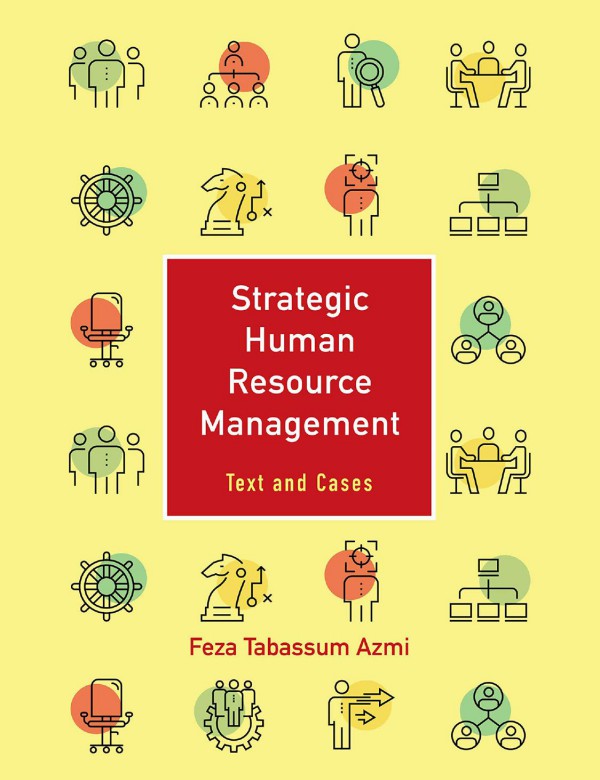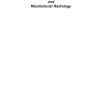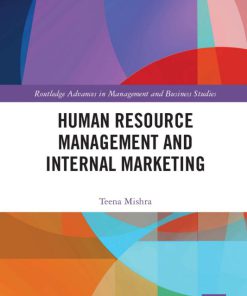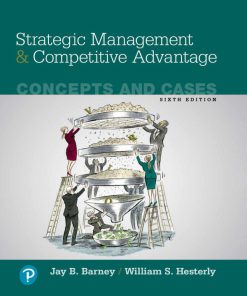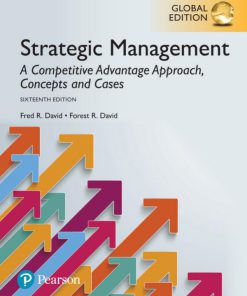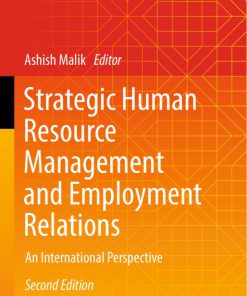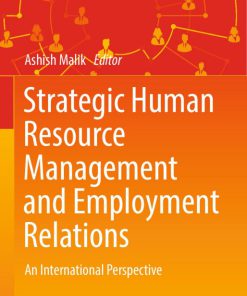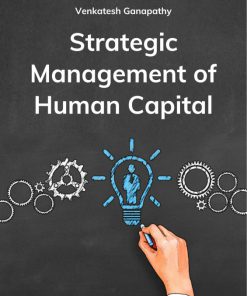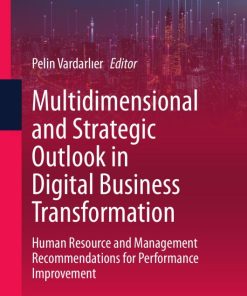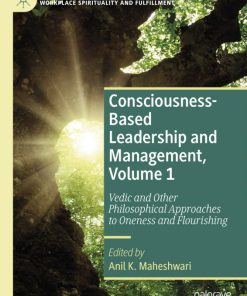(Ebook PDF) Strategic Human Resource Management Volume 1 Text and Cases 1st edition by Feza Tabassum Azmi 1108642209 9781108642200 full chapters
$50.00 Original price was: $50.00.$25.00Current price is: $25.00.
Authors:Feza Tabassum Azmi , Series:Strategic Studies [131] , Author sort:Azmi, Feza Tabassum , Languages:Languages:eng , Published:Published:May 2019 , Publisher:CAMBRIDGE UNIVERSITY PRESS
Strategic Human Resource Management Volume 1 Text & Cases 1st edition by Feza Tabassum Azmi – Ebook PDF Instant Download/DeliveryISBN: 1108642209, 9781108642200
Full download Strategic Human Resource Management Volume 1 Text & Cases 1st edition after payment.
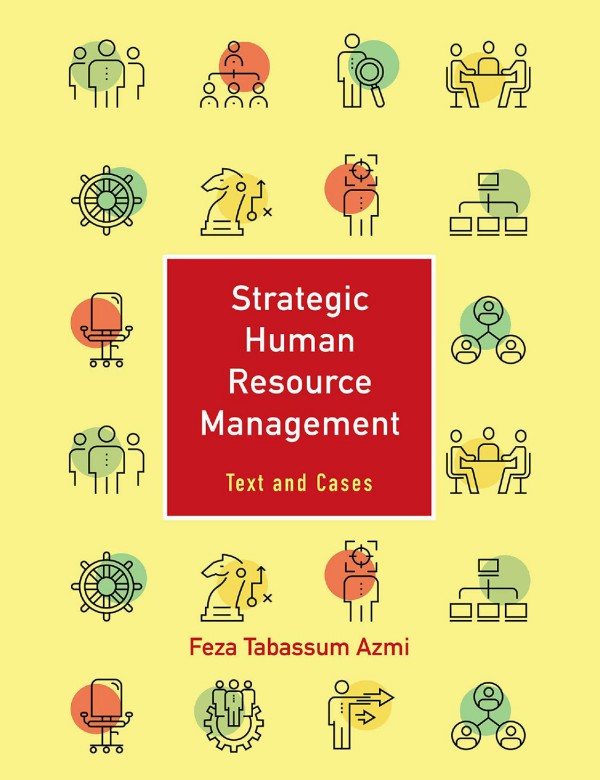
Product details:
ISBN-10 : 1108642209
ISBN-13 : 9781108642200
Author : Feza Tabassum Azmi
This book provides a comprehensive and up-to-date text in the subject. It seeks to address a wide gap existing in terms of the availability of a book that provides extensive coverage in the field. It aims to provide students in human resource management courses and practising managers with a comprehensive view of essential concepts and techniques in a highly readable and understandable form. This book particularly focuses on practical applications, examples and cases that managers can utilise in gaining insights into the subject in order to carry out their HR-related responsibilities. It focuses on practical applications, examples and cases that will be useful for both students and HR managers. It serves two important purposes: to provide an academically rigorous study, and at the same time, offer comprehensive and user-friendly pedagogy. The case studies cited in the book are from across the globe, including studies from India, and will appeal to a large audience.
Strategic Human Resource Management Volume 1 Text & Cases 1st Table of contents:
PART I The Framework of Strategic Human Resource Management
CHAPTER 1 Concept of Strategic Human Resource Management
Chapter Overview
Learning Objectives
OPENING STORY
General Electric’s Journey to ‘Imagination at Work’
The journey thus far …
GE’s website states
CONCEPTUAL BACKGROUND
MODELS OF SHRM
The Best Fit School
Instrumental Approach to SHRM
The Michigan Model
Managerial implications of the model
Humanistic Approach to SHRM
The Harvard Model
Managerial implications of the model
The Best Practice School
Universalistic Perspective
Configurational Perspective
Reconciling the Different Views
CHARACTERISTICS OF SHRM
Vertical Fit
Horizontal Fit
Internal Fit
External Fit
SHRM FRAMEWORK
Strategy Formulation
Strategy Implementation
Strategy Evaluation
EMERGING HR SCENARIO
New Age HR Departments
Changing HR Roles
Typologies of HR Roles
Levels and Domains of HR Roles
Role of Functional Area Managers in HR
Role of Top Managers in HR
Non-linear and Lateral Moves
CHAPTER SUMMARY
EXERCISES AND DISCUSSION QUESTIONS
CASELET
Strategic HR at Colgate-Palmolive
Questions for Discussion
NOTES
PART II Context of SHRM
CHAPTER 2 Environment of SHRM
Chapter Overview
Learning Objectives
OPENING STORY
India’s Economic Growth
Advantage India
Success stories
BUSINESS ENVIRONMENT: AN INTRODUCTION
THE SYSTEMS CONCEPT
BUSINESS ENVIRONMENT AND SHRM
EXTERNAL ENVIRONMENTAL FACTORS
Macro environment
Economic Environment
Economic Structures
Parameters to Map Economic Structures
Economic Systems
Economic Policies
Implications of Economic Environment for HRM
Politico-legal Environment
Political system and nature of polity
Types of laws and legal framework
The Institutions of Politico-legal System
Implications of Politico-legal Environment for HRM
Sociocultural Environment
Social structure and type of society
Demographics
Education
Religion, beliefs, and customs
Lifestyle and preferences
The Labour Market
Implications of Sociocultural Environment for HRM
Technological Environment
Micro environment
Customers
Competitors
Suppliers and Lenders
Implications of Micro Environmental Factors for HRM
INTERNAL ENVIRONMENTAL FACTORS
Nature of Business and Industry
Organizational Mission and Strategy
Size of the Organization
Structure of the Organization
Organizational Culture
Philosophy and Priorities of Management
Role of Unions
CHAPTER SUMMARY
EXERCISES AND DISCUSSION QUESTIONS
CASELET
Reliance Jio—The Game Changer?
Questions for Discussion
NOTES
CHAPTER 3 Technology and HRM
Chapter Overview
Learning Objectives
OPENING STORY
Kumbh Mela Goes Hi-tech
TECHNOLOGICAL ENVIRONMENT
TRENDS IN THE NATURE OF WORK
IT AND HRM
What Is E-HR?
IMPACT ON HR SUB-SYSTEMS
Taking the Office to the Clouds
IMPACT ON HR CULTURE AND STRUCTURE
Emerging Organizational Forms
Virtual Organization
Hyperarchy Organization
Velcro Organization
Ambidextrous Organization
CHALLENGES AND OPPORTUNITIES
SOCIAL MEDIA AND HR
Talent Acquisition
Talent Management
Talent Retention
Merits and Risks of Using Social Media
INTERNET OF THINGS, BIG DATA, AND HR
CHAPTER SUMMARY
EXERCISES AND DISCUSSION QUESTIONS
CASELET
Circular Organization at Harley-Davidson Motor Company
Background Note
HR Initiatives
Questions for Discussion
NOTES
PART III Strategy Formulation
CHAPTER 4 Strategy Formulation and HRM
Chapter Overview
Learning Objectives
OPENING STORY
Rethinking the Role of HR
STRATEGIC MANAGEMENT PROCESS
IMPORTANCE OF HUMAN RESOURCES TO STRATEGY
INTEGRATION OF STRATEGY AND HRM
STRATEGY FORMULATION AND PLANNING
TYPOLOGY OF INTEGRATED HR SYSTEMS
Porter’s Competitive Strategies
Miles and Snow’s Typology
Sonnenfeld and Pieperl’s Typology
Club
Baseball Team
Academy
Fortress
CHAPTER SUMMARY
EXERCISES AND DISCUSSION QUESTIONS
CASELET
Strategic HR Integration at The Walt Disney Company
Contribution of HRM strategy in achieving objectives
Disney’s future
Questions for Discussion
NOTES
CHAPTER 5 Workflow Analysis and Strategic Job Analysis
Chapter Overview
Learning Objectives
OPENING STORY
The Future of Work
Future of Work initiative timelines
FUTURE OF WORK AND TALENT MANAGEMENT
WORKFLOW ANALYSIS
Steps in Workflow Analysis
JOB DESIGN, JOB REDESIGN, AND JOB ANALYSIS
UNDERSTANDING JOB ANALYSIS
Job Content
Job Context
Job Requirements
Job Description
Typical Items in a Job Description
Job Specification
Typical Items in a Job Specification
Conducting Job Analysis
STRATEGIC JOB ANALYSIS
STRATEGIC JOB ANALYSIS AND DEJOBBING
COMPETENCY PROFILING AND STRATEGIC JOB MODELLING
Competency Profiling
Example of Competency Mapping
Strategic Job Modelling
Example of SJM
CHAPTER SUMMARY
EXERCISES AND DISCUSSION QUESTIONS
CASELET
Job Remodelling at Tata Motors
The New HR Roadmap
The Path Not So Smooth
Questions for Discussion
NOTES
PART IV Strategy Implementation
CHAPTER 6 Strategic Human Resource Planning and Staffing
Chapter Overview
Learning Objectives
OPENING STORY
Strategic Manpower Planning in Indian Armed Forces
HR Dimension in Perspective Planning
Army’s Existing Manpower Planning
STRATEGIC HUMAN RESOURCES PLANNING (SHRP)
SHRP PROCESS
Aligning HR Vision with Company Vision
Environmental Scanning
Developing Forecast through Workforce Analysis
Demand Analysis
Jobs and Skills Audit
Supply Analysis
Internal Supply Assessment
Manual system
Computerized skills inventories
External Supply Assessment
Gap Analysis
Formulate HR Plans
Vertical and Horizontal Integration
Monitoring, Evaluating, and Reporting
STRATEGIC STAFFING
STRATEGIC RECRUITMENT
Sources of Recruitment
Internal Sources of Recruitment
Promotions
Job Postings
Transfers and Lateral Moves
Job Rotation
External Sources of Recruitment
Walk-ins or Unsolicited Applications
Employee Referrals
Advertising
Choice of media
Creating advertisement
Contract Recruiting
Employment Agencies
Executive Search Firms or Headhunters
Special Events Recruiting
Job Fairs
Temping and Leasing Agencies
Campus Recruiting
Summer Internships
Boomerang Employees
Talent Poaching
Internet-based Sources
Company Website
Online Recruiting Portals
Social Networking Sites
Mobile Recruiting
Virtual Job Fairs
Internal versus External Recruitment
STRATEGIC RECRUITMENT AND REALISTIC JOB PREVIEW
STRATEGIC SELECTION
Reliability, Validity, and Utility (RVU)
Reliability
Validity
Utility
THE SELECTION MECHANISM
The Selection Team
The Selection Process
Stage 1: Initial Screening
Screening of Application Forms
Preliminary Interview and Job Preview
RVU vis-à-vis Application Blanks
Stage 2: Selection Tests
Performance Simulation Tests
Cognitive Ability Tests
Psychological Tests
RVU vis-à-vis Tests
Stage 3: Selection Interview
RVU vis-à-vis Interviews
Stage 4: Background Checks
Stage 5: Selection Decision
PLACEMENT AND INDUCTION
The Socialization Process
CHAPTER SUMMARY
EXERCISES AND DISCUSSION QUESTIONS
CASELET
Mirakle Couriers: Driving Social Change
Staffing Challenges
Questions for Discussion
NOTES
CHAPTER 7 Strategic Training and Development
Chapter Overview
Learning Objectives
OPENING STORY
Barbie Doll’s Journey
Emerging Markets and India
FROM TRAINING TO LEARNING
ORGANIZATIONAL LEARNING
THE LEARNING FRAMEWORK
LEARNING AND KNOWLEDGE MANAGEMENT
THE ADDIE MODEL
Learning Needs Analysis
Designing the Learning Strategy
Developing the Content
Implementing Learning Strategy
On-the-job Methods
Off-the-job Methods
E-learning
Synchronous Learning
Asynchronous Learning
Evaluating Learning
THE EMPLOYEE LEARNING MATRIX
UNLEARNING AND RELEARNING
CAREER PLANNING AND DEVELOPMENT
Career Management Systems
PROMOTIONS AND SUCCESSION PLANNING
Promotion Decisions: Seniority versus Merit
Vertical and Horizontal Promotions
Career Plateaus
Dual Career Paths
CHAPTER SUMMARY
EXERCISES AND DISCUSSION QUESTIONS
CASELET
How Toyota Learns to Excel
Toyota India
Questions for Discussion
NOTES
CHAPTER 8 Performance Management and Compensation
Chapter Overview
Learning Objectives
OPENING STORY
Evolving Performance Management Paradigm
The Pre-historic Times
The Ancient Egyptian Philosophy
The Babylonian Philosophy
The Chinese Philosophy
Ancient Indian Philosophy
The Hebrew Philosophy
The Roman Philosophy
Biblical Philosophy
Islamic Philosophy
PERFORMANCE APPRAISAL
Performance Appraisal Process
Setting work standards and targets
Assessing performance
Who appraises
When to appraise
What to appraise
How to appraise
Category Rating Methods
Comparative Methods
Narrative Methods
Behavioural Methods
Management by Objectives (MBO)
Preparing Appraisal Report
WEAKNESSES OF PERFORMANCE APPRAISAL SYSTEM
PERFORMANCE APPRAISAL TO PERFORMANCE MANAGEMENT
360-degree Appraisal
Advantages and Disadvantages of 360-degree Appraisal
Competency-based Appraisal
APPRAISAL FEEDBACK AND COUNSELLING
POTENTIAL APPRAISAL
COMPENSATION AND REWARDS
TRADITIONAL COMPENSATION SYSTEM
Limitations of Traditional Methods
STRATEGIC COMPENSATION
Approaches to Strategic Compensation
Compensation for Individual Performance
Merit Pay
Advantages and Limitations
Competency-based Pay
Advantages and Limitations
Broadbanding of Pay Scales
Advantages and Limitations
Compensation for Team Performance
Team-based Pay
Gainsharing
Team Awards and Bonus
Advantages and Limitations
Compensation for Organizational Performance
Variable Compensation
Advantages and Limitations
Performance Bonus
Advantages and Limitations
Profit Sharing
Advantages and Limitations
Employee Stock Option Plan (ESOP)
Advantages and Limitations
Non-monetary Incentives and Benefits
EXECUTIVE COMPENSATION
DESIGNING AN EFFECTIVE COMPENSATION STRATEGY
CHAPTER SUMMARY
EXERCISES AND DISCUSSION QUESTIONS
CASELET
Performance Management and Rewards at Tata Consultancy Services
Questions for Discussion
NOTES
CHAPTER 9 Employee Relations, Engagement, and Termination
Chapter Overview
Learning Objectives
OPENING STORY
Industrial Relations Reforms in India
Legislative initiatives of Government of India
EMPLOYEE RELATIONS
TRADE UNIONISM
COLLECTIVE BARGAINING
Pre-negotiation phase
Negotiation phase
Post-negotiation phase
EMPLOYEE PARTICIPATION IN MANAGEMENT
Indirect/Informal Participation
Direct/Formal Participation
EMPLOYEE ENGAGEMENT
Typology of Employee Engagement
The Cost of Disengagement
Measuring Employee Engagement
Fostering Employee Engagement
EMPLOYEE RETENTION AND TERMINATION
Termination Planning
Issues in termination planning and strategy
Improving Employee Retention
CHAPTER SUMMARY
EXERCISES AND DISCUSSION QUESTIONS
CASELET
Employee Relations and Engagement at Taj Hotels
The 26/11 Attacks at Taj
Questions for Discussion
NOTES
PART V Strategy Evaluation
CHAPTER 10 Strategic HR Evaluation
Chapter Overview
Learning Objectives
OPENING STORY
HR and Finance—Marriage on the Clouds
MEASURING HRM
APPROACHES TO HRM EVALUATION
EVALUATING HR SUBSYSTEMS
Evaluating HRP
Measures Used for Evaluating HRP
Evaluating Staffing
Measures Used for Evaluating Staffing
Evaluating Learning and Development
Measures Used for Evaluating Learning and Development
Evaluating Performance Management
Measures Used for Evaluating the Performance Management System
Evaluating Compensation
Measures Used for Evaluating the Compensation System
Evaluating Employee Relations
Measures Used for Evaluating Employee Relations
EVALUATING THE HR SYSTEM
The HR Scorecard
STRATEGIC HR EVALUATION: CHALLENGES
HR ANALYTICS
Domains of HR Analytics
CHAPTER SUMMARY
EXERCISES AND DISCUSSION QUESTIONS
People also search for Strategic Human Resource Management Volume 1 Text & Cases 1st:
strategic human resource management lecture
strategic human resource management mello
strategic human resource management examples
strategic human resource management vs traditional
amazon strategic human resource management

